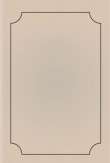قراءة كتاب Aphrodisiacs and Anti-aphrodisiacs: Three Essays on the Powers of Reproduction
تنويه: تعرض هنا نبذة من اول ١٠ صفحات فقط من الكتاب الالكتروني، لقراءة الكتاب كاملا اضغط على الزر “اشتر الآن"

Aphrodisiacs and Anti-aphrodisiacs: Three Essays on the Powers of Reproduction
href="@public@vhost@g@gutenberg@html@files@27752@[email protected]#Page_106" class="pginternal" tag="{http://www.w3.org/1999/xhtml}a">106
Cabanis quoted
D'Obsonville quoted
Portable Gold—Shakespeare quoted
Bouchard's Account of Aphrodisiacal Charms
Flagellation—Graham's Celestial Bed—Lady Hamilton—Lord Nelson, &c.
Burton quoted
Anti-Aphrodisiacs:
|
Refrigerants—Recommendation of Plato and Aristotle |
128-129 |
|
Sir Thos. Brown quoted |
130 |
|
Origen |
130 |
|
Camphor an anti-aphrodisiac |
134 |
|
Coffee an anti-aphrodisiac—Abernethey's saying (note) |
137 |
|
Infibulation, Holyday quoted |
141-144 |
|
Bernasco Padlocks |
144 |
|
Voltaire's poem of the Cadenas |
146 |
|
Rabelais' anti-aphrodisiacal remedies |
147-154 |
 EGYPTIAN PHALLI. and Pompeian House—sign. |
ESSAY I.
REMARKS UPON THE SYMBOLS OF THE
REPRODUCTIVE POWERS.
 ROM the investigations and researches of the learned, there appears to be no doubt but that the most ancient of all superstitions was that in which Nature was contemplated chiefly under the attribute or property of fecundity; the symbols of the reproductive power being those under which its prolific potencies were exhibited. It is not because modern fastidiousness affects to consider those symbols as indecent, and even obscene, that we should therefore suppose them to have been so regarded by the ancients: on the contrary, the view of them awakened no impure ideas in the minds of the latter, being regarded by them as the most sacred objects of worship. The ancients, indeed, did not look upon the pleasures of love with the same eye as the moderns do; the tender union of the sexes excited their veneration, because religion appeared to consecrate it, inasmuch as their mythology presented to them all Olympus as more occupied with amatory delights than with the government of the universe.
ROM the investigations and researches of the learned, there appears to be no doubt but that the most ancient of all superstitions was that in which Nature was contemplated chiefly under the attribute or property of fecundity; the symbols of the reproductive power being those under which its prolific potencies were exhibited. It is not because modern fastidiousness affects to consider those symbols as indecent, and even obscene, that we should therefore suppose them to have been so regarded by the ancients: on the contrary, the view of them awakened no impure ideas in the minds of the latter, being regarded by them as the most sacred objects of worship. The ancients, indeed, did not look upon the pleasures of love with the same eye as the moderns do; the tender union of the sexes excited their veneration, because religion appeared to consecrate it, inasmuch as their mythology presented to them all Olympus as more occupied with amatory delights than with the government of the universe.
The reflecting men of those times, more simple, but, it must be confessed, more profound, than those of our own day, could not see any moral turpitude in actions regarded by them as the design of nature, and as the acme of felicity. For this reason it is that we find not only ancient writers expressing themselves freely upon subjects regarded by us as indecent, but even sculptors and painters equally unrestrained in this particular.
The statesman took advantage of these religious impressions: whatever tended to increase population being held in honour. Those images and Priapi so frequently found in the temples of the ancients, and even in their houses, and which we consider as objects of indecent lewdness, were, in their eyes, but so many sacred motives exciting them to propagate their species.
In order to represent by a physical object the reproductive power of the sun in spring-time, as well as the action of that power on all sentient beings, the ancients adopted that symbol of the male gender which the Greeks, who derive it from the Egyptians, called—Phallus.1 This worship was so general as to have spread itself over a large portion of the habitable globe, for it flourished for many ages in Egypt and Syria, Persia, Asia Minor, Greece and Italy: it was, and still is, in vigour in India and many parts of Africa, and was even found in America on its discovery by the Spaniards. Thus Garcilaso de la Vega informs us2 that, in the public squares of Panuco (a Mexican town), bas-


